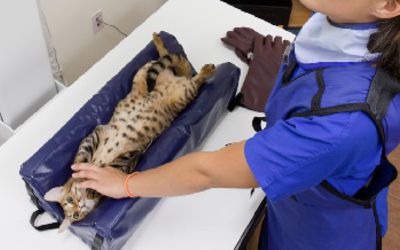
Veterinary radiography has transformed vastly over the years. Modern equipment, paired with advanced techniques, ensures that our furry friends receive the top-notch care available. One key development in this area is the use of vet x-ray positioning aids. This guide delves deep into the world of x-ray positioning aids, offering you a complete overview.
Understanding Vet X-ray Positioning Aids
Before delving into the specifics, let's first grasp the underlying concept. In simple terms, x-ray positioning aids assist veterinary specialists secure the most precise images while making sure minimal discomfort for the animal. They play a essential role in holding pets in the correct position, minimising movement, and making certain regular, high-quality results.
Why are X-ray Positioning Aids Imperative in Veterinary Practice?
Safety for Both Animal and Technician: Minimising animal movement is essential during x-ray procedures. This not only makes sure clear images but also minimizes the risk of radiation exposure for both the animal and the technician.
Consistent Image Quality: Steadiness is key when it comes to x-rays. Vet x-ray positioning aids help in achieving that by ensuring animals are held in the proper posture for clear images.
Reduction in Retakes: If a pet moves during the x-ray operation, the chances are high that the images might emerge unclear. Positioning aids considerably reduce such occurrences, leading to fewer retakes.
Popular Types of Vet X-ray Positioning Aids
Foam Positioners: These lightweight and durable positioners are ideal for holding up the animal's body parts during radiography. They appear in various shapes and sizes designed to fit different animals and body parts.
Sandbags: They're excellent for securing and positioning. Their weight assists hinder movement during the x-ray procedure.
Tape and Straps: These can be employed to bind limbs in place. They're gentle on the skin and can be adjusted based on the pet's comfort.
Immobilisation Devices: For pets that are particularly agitated, immobilisation devices can provide a safe way to hold them still during the x-ray process without inflicting any discomfort.
Selecting the Right X-ray Positioning Aids for Your Veterinary Clinic
With the range of aids at one's disposal, selecting the appropriate one might feel daunting. However, consider the following factors:
Type of Animals Treated: A clinic chiefly handling with small pets might have different requirements than one handling with larger animals.
Frequency of Use: Resilient positioning aids are a requirement for busy clinics.
Budget: While it's vital not to sacrifice on quality, vet clinics also need to guarantee they're making economical decisions.
Tips for Using Vet X-ray Positioning Aids Effectively
Training is Essential: Make sure that all your staff are properly trained in using the aids. This will assure the safety and comfort of the animals while obtaining the best possible x-ray images.
Regular Maintenance: Like all gear, vet x-ray positioning aids also wear down with time. Consistently check for wear and tear and swap them when required.
Prioritise Comfort: While achieving the perfect image is vital, it's equally important to ensure the animal's comfort. Always make certain that any restraints or positioners used aren't creating any discomfort to the animal.
Vet x-ray positioning aids have changed the field of veterinary radiography. They have not only guaranteed the creation of clear, high-quality images but have also played a vital role in improving the safety and comfort of the pets undergoing the process. As veterinary experts, it's our responsibility to ensure we're equipped with the best tools and knowledge to offer our furry customers the best care imaginable.
If you're in the market to improve your veterinary clinic with the most recent x-ray positioning aids or need more information about them, visit xray4vets. Jump into a realm of advanced veterinary tools and enhance the care you render to your treasured animal patients.